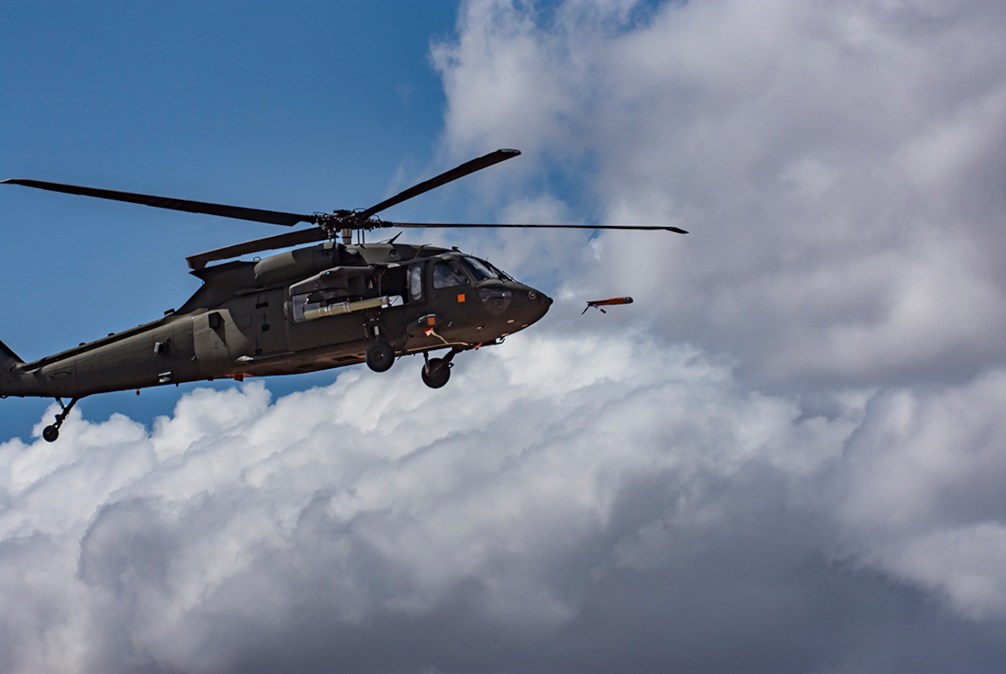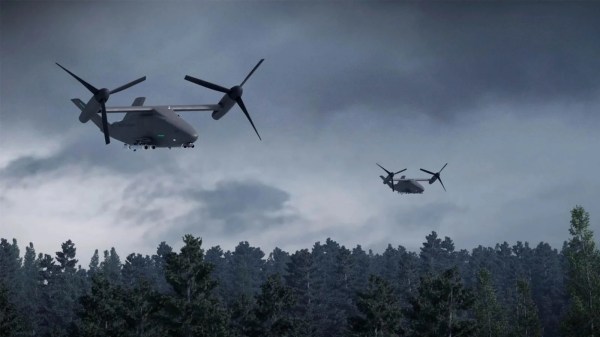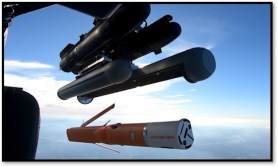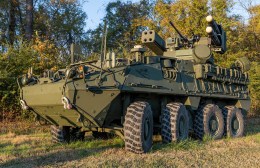Army eyes modernized, long-range systems to bolster aircraft survivability

The Army is looking to extend the ranges of its equipment designed to protect the service’s aviation fleet and personnel from emerging threats.
The organization’s aircraft survivability equipment (ASE) initiative has a number of efforts underway aimed at developing a suite of sensors and countermeasure systems to protect platforms currently in the inventory as well as those that are in the works, such as the Future Long Range Assault Aircraft (FLRAA). Col. Brock Zimmerman, program manager for ASE, said many of the new programs are being designed to detect and defeat adversary capabilities at much longer ranges than the Army’s current systems.
“We’ve seen a dramatic change in the threat landscape. There’s threats out there that we didn’t think about 15 years ago, now with [unmanned aerial vehicles] and things like that — non-standard types of activities that some of our adversaries are conducting,” Zimmerman told DefenseScoop during an interview on the sidelines of the annual AUSA conference. “We’ve got to be able to see and detect further out, and that’s what we’re doing. Everything that we do is … threat driven.”
One program under ASE that aims to help the Army sense farther into the battlefield is the Improved Threat Detection System (ITDS), a next-generation missile warning sensor that will be integrated across the service’s aviation fleet. The infrared sensor suite will enable soldiers to detect and classify threats, as well as cue appropriate kinetic or non-kinetic countermeasure systems — such as the new laser-based Common Infrared Countermeasure (CIRCM) — to defeat them.
ITDS is intended to replace the Army’s legacy Common Missile Warning System, which has reached its limits in terms of how far it can sense enemy capabilities, Zimmerman said.
After hosting a handful of companies at Aberdeen Proving Ground for “sensor rodeo” demonstrations to test potential solutions, the ASE office awarded Northrop Grumman and Lockheed Martin an other transaction agreement (OTA) in July for phase 1 of ITDS.
The program’s OTA is only authorized for a two-year work period as the Army works to approve a finalized requirement for ITDS, Zimmerman noted. The two vendors will conduct a technology demonstration that will allow the department to evaluate the effectiveness and maturity of the two solutions, after which the service hopes to move forward with a single solution.
“We’re waiting on that requirement to get finalized so that we can go back and possibly do a Middle Tier Acquisition, where I would think we would downselect … based off what we’re seeing for the first two years with Lockheed and Northrop,” Zimmerman said.
While running its own modernization efforts, ASE is also keeping a close eye on Army Aviation’s development of launched effects, Zimmerman noted. The small, unmanned drones are designed to be deployed from both manned aircraft and ground-based launchers, and the service is currently experimenting with a variety of sizes that offer different ranges.
For aircraft survivability, having sufficient range from launched effects will be imperative, Zimmerman said.
“There’s so many countries that are using capability [and] we can’t even see it. That’s what we’re trying to do, to be able to see further and detect further,” he said. “So whatever comes from [Army Aviation] will be a game changer — not only for fixed wing aircraft, but for helicopters too.”
Moving forward, however, the ASE office is bracing for possible challenges in receiving adequate funding for all of its programs. The fiscal crunch is being felt across the entire Defense Department, as competing priorities and repeated continuing resolutions from Congress in recent years have put several efforts in jeopardy.
In the face of financial constraints, Zimmerman said his office is trying to think outside the box in how it addresses budgetary challenges and manages its money.
“If they changed our Army procurement objective numbers, how can we kind of recolor our money to take care of our own bills that we had presented to the Army, and then change that flavor of money to something else?” he said. That could entail taking funds allocated for another program’s research and development and putting it towards ITDS.
The program office is also working closely with both the aviation and the ground communities to determine what sensors and countermeasure capabilities are most needed, and how they can be fielded in an efficient way, he said.
“Since we’re in this fiscal constraint, we can’t put everything on every aircraft,” Zimmerman said. “I think that’s where the aviation enterprise comes in, and we’ve got to work together to figure out what exactly that looks like, what’s in the realm of possible to do that holistic survivability or layered defense approach.”






